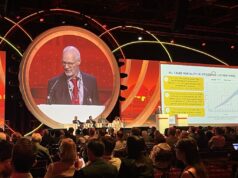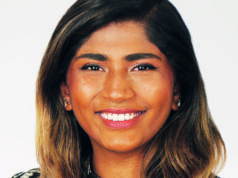
Most American adults take an average of 5,000 steps per day. In fact, this simple act—getting out and moving—can be the key to prevention and treatment of many chronic diseases of the cardiovascular system.
The Society for Vascular Surgery (SVS) hopes to step up, so to speak, that 5,000-step number with a major initiative aimed squarely at promoting the health benefits of walking. The SVS Vascular Health Step Challenge takes place during September, National Peripheral Arterial Disease (PAD) Awareness Month.
During challenge, vascular surgeons will not only talk the talk but walk the walk, competing in teams whose members each pledge to walk at least 60 miles during the month. The 60 miles represent the 60,000 miles of blood vessels in the human body.
The Vascular Health Step Challenge is not just a fundraiser but an opportunity for vascular surgeons across the country and the world to engage with their communities and spread the word about the importance of vascular health.
The initiative also will raise awareness about vascular disease, and what a vascular surgeon is and what they do. The SVS Public and Professional Outreach Sub-Committee is spearheading the project. “As vascular surgeons, we put patient health and outcomes above everything else, and the SVS Vascular Health Step Challenge is a tangible way to demonstrate that commitment,” said Benjamin Pearce, MD, committee chair.

After all, vascular surgeons focus a great deal of time to mitigate the effects and causes of vascular disease without surgery, said committee member Alan Dietzek, MD. “There’s no more beautiful message than surgeons doing their best to keep their patients out of surgery,” agreed Pearce. “It all links back to our motto, ‘Surgery is only part of our story.’” Pearce himself is a big advocate of walking, eschewing golf carts while partaking in a favorite activity. “I’ve been an adamant walker for years on the golf course,” he said. He estimates a golfer can log nearly 2,000 more steps in nine holes when walking versus riding in a cart. Dietzek said the No. 1 complaint his older patients give, when asked how aging affects their lives, is “I can’t walk the golf course anymore.”
Pearce, Dietzek and the other committee members want to link the SVS and walking. “When you think of smoking cessation, you think of the American Lung Association,” said Pearce. “I want people to automatically think of SVS when they think about walking for health.”
Walking affects many aspects of cardiovascular health, from PAD to hypertension to slowing the growth of abdominal aortic aneurysms (AAAs). The SVS has created lists of factoids on the benefits of walking that SVS members can download and give to patients. One such infographic is the “Steps for Vascular Health” poster, tying the health benefits of various numbers of steps.
PPO Committee members will be among the first to form their walking teams. The idea is straightforward. Individuals sign up on the Charity Footprints website, at vascular.org/VascularHealthChallenge, and pair their personal fitness devices, such as a Fitbit or Apple Watch, to the site, download the Charity Footprints application on smartphones, or log in manually on the website. SVS members will join their respective regional team, and community participants can start their own team or join an existing one. Then, between Sept. 1 and 30, participants get walking, logging the steps, and transferring them to the website. Walkers can seek donors for an overall amount or a per-step contribution. All proceeds will go to the SVS Foundation, which will use the monies generated to assist vascular patients with exercise therapy. In addition, proceeds will help create additional public education materials about vascular health and support further development of the SVS Supervised Exercise Therapy (SET) app.
Committee members also are thinking creatively about how to undertake the challenge. Pearce is hoping to walk with his team on a Grand Prix racetrack in his home state of Alabama. Dietzek wants to involve the world of professional golf. “Think of an area in your community that would provide an inspiring way to finish the challenge,” urged Pearce. “It could be the track around the high school football stadium, or a riverwalk, or a well-known park.”












